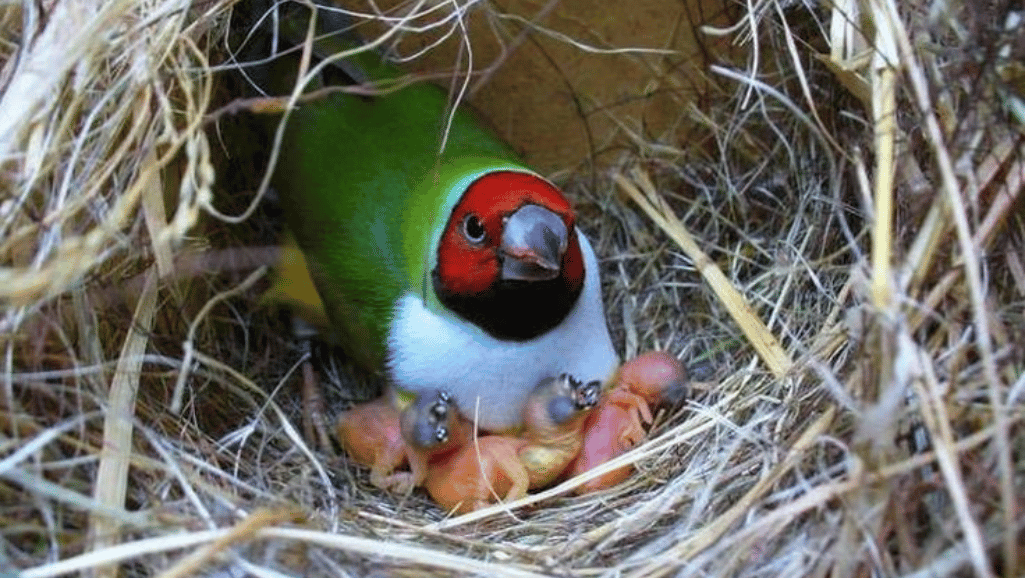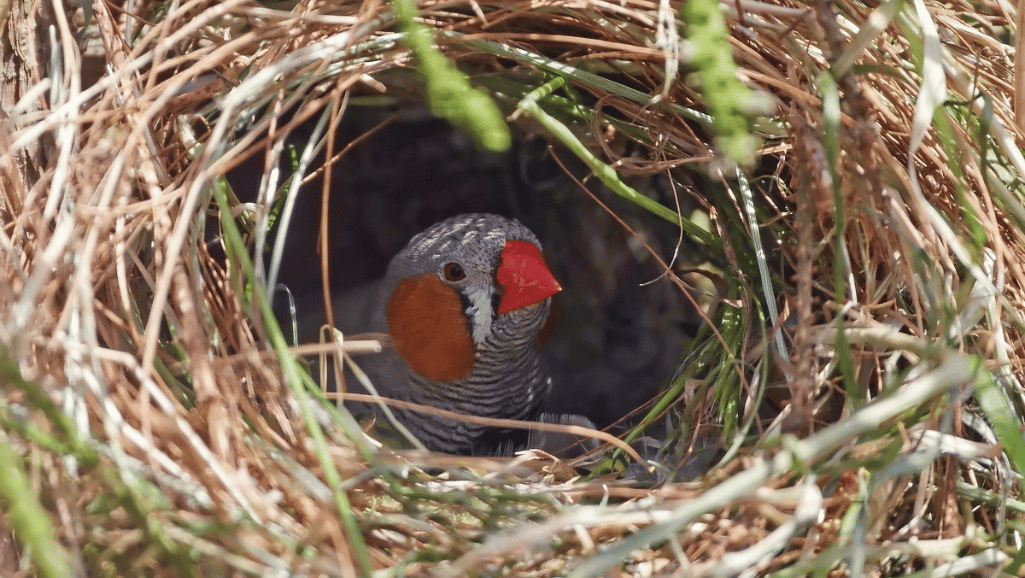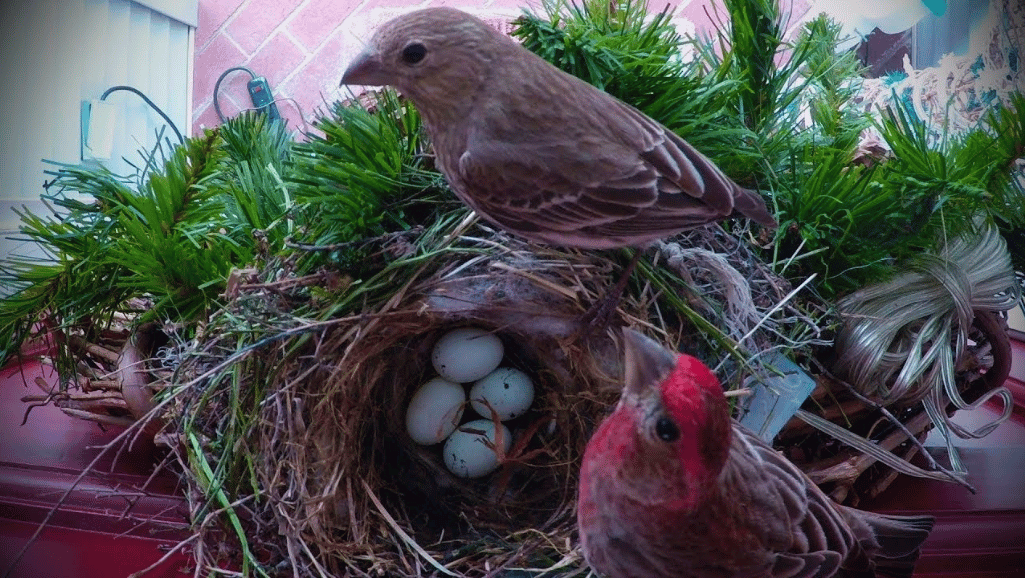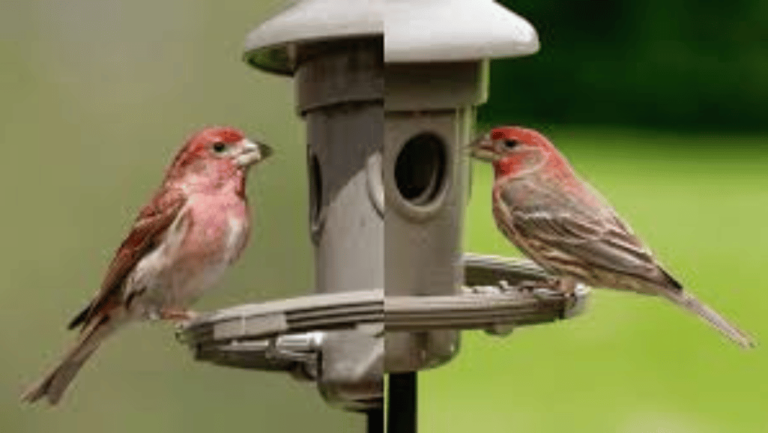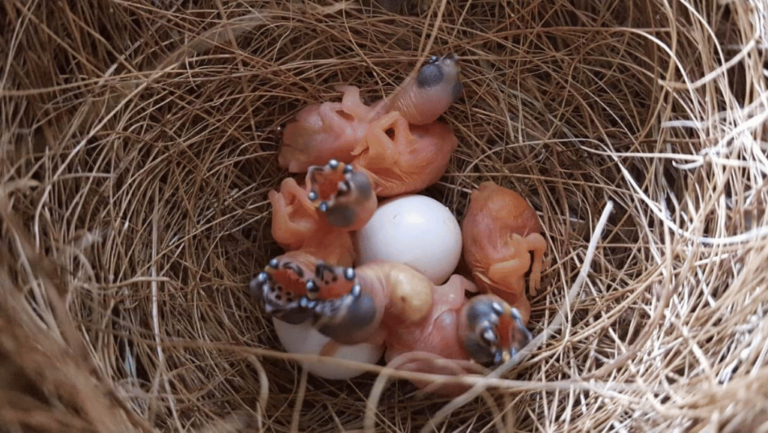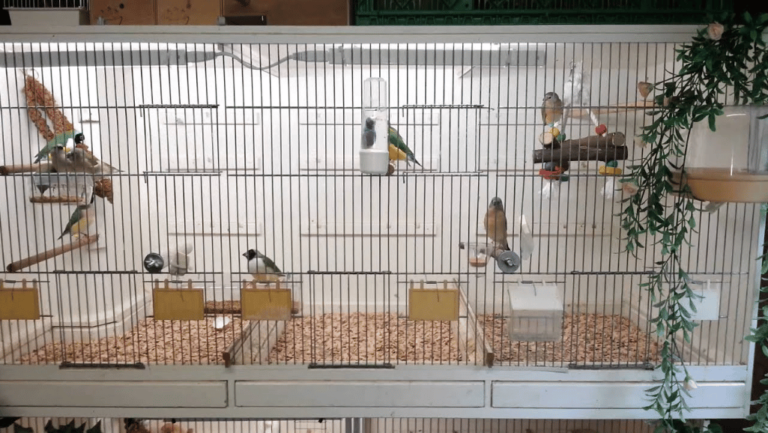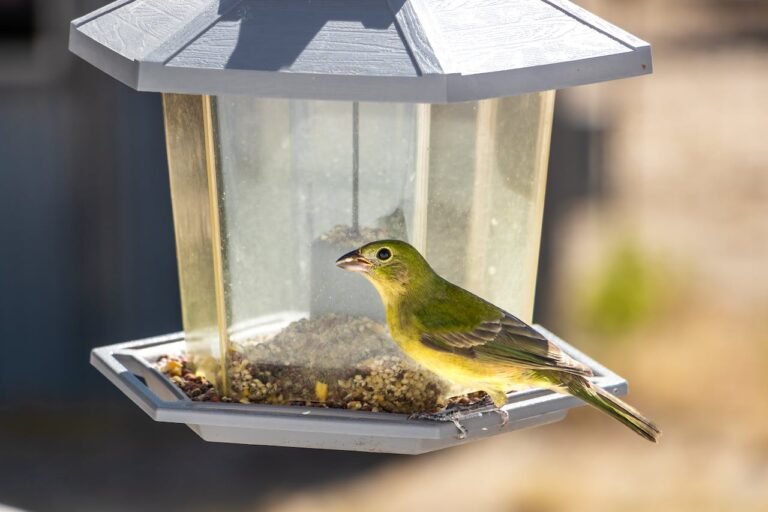Welcome to Finch Haven, your guide to finding the perfect nest for your finches. If you’re a finch owner looking to provide a cozy and comfortable space for your feathered friends, you’ve come to the right place. While finches don’t naturally build nests for protection like other birds, they still appreciate having a suitable nesting environment. In this article, we’ll explore the best bird nests for finches and the materials they love. Let’s dive in!
Key Takeaways:
- Finches do not build nests for protection; trees are their natural habitats.
- The top finch nests for cages are made of natural materials like fresh or dried grasses, coco fiber, torn tissue paper, soft feathers, and burlap squares.
- When keeping finches, it’s important to consider their compatibility with other bird species.
- Finches are social birds and are happiest when kept in pairs or in larger flocks.
- Canaries can coexist with other bird species, but aggression should be monitored.
Top Finch Nests for Cages
When it comes to providing a cozy and comfortable nest for your finches, choosing the right materials is crucial. Here are some of the best nest choices for finches:
1. Natural Grass Nests
Finches are known for their affinity for natural materials, and grass nests are a perfect choice. These nests are made from fresh or dried grasses, providing a soft and natural environment for your finches. They are readily available in pet stores or can be handmade using natural, pesticide-free grass.
2. Coconut Fiber Nests
Coconut fiber nests, also known as coco fiber nests, are another excellent option for finches. They are made from the husk of coconuts, which is shredded and formed into a nest shape. Coconut fiber nests are sturdy and durable, providing a safe space for your finches to lay their eggs and rear their young.
3. Torn Tissue Paper Nests
For finches that prefer a softer nesting material, torn tissue paper nests are a great choice. These nests are made by tearing tissue paper into small pieces and creating a cozy nest structure. They offer comfort and warmth, ensuring the well-being of your finches during the nesting period.
4. Burlap Square Nests
Burlap square nests with an open weave are another popular option for finches. The open weave allows the finches to pick into the threads and create their nest structure. Burlap nests provide a natural and breathable environment, mimicking their natural habitats.
To make the nesting process easier for your finches, you can also provide additional nesting materials such as soft feathers and nesting wool. These materials will help them build their nests more efficiently and create a cozy environment for their offspring.
| Nest Type | Material | Durability | Availability |
|---|---|---|---|
| Natural Grass Nests | Fresh or dried grasses | Medium | Readily available |
| Coconut Fiber Nests | Coconut husk | High | Readily available |
| Torn Tissue Paper Nests | Torn tissue paper | Low | Easy to create |
| Burlap Square Nests | Burlap with open weave | High | Readily available |
Choose the nest type that suits your finches’ preferences and create a safe and comfortable home for them to thrive. Providing a variety of nest choices can also stimulate natural behaviors and enhance their overall well-being. Remember to regularly inspect and replace nests to maintain cleanliness and hygiene.
Compatibility with Other Birds
When keeping finches, it’s important to consider their compatibility with other birds. Some species can live together harmoniously, while others may require special considerations. Here are a few examples:
Finch Species That Can Live Together
- Gouldian Finch
- Double-Barred Finch
- Bengalese Finch
- Plum-headed Finch
- Red-headed Parrot Finch
- Chestnut Munia
- Scaly-Breasted Munia
Star Finches, although they can coexist with other birds, may require extra space and cover due to their timid nature. On the other hand, Canaries are generally happier on their own or in pairs and prefer larger aviaries to accommodate their active nature.
Finch Species With Aggressive Tendencies
- Diamond Firetail Finch
- Cut-Throat Finch
These finch species are more aggressive and may not be suitable for mixed aviaries. It’s important to provide them with adequate space and separate nesting areas to prevent conflicts with other birds.
Keeping a Single Finch
Finches are social birds and thrive in the company of others. It is not recommended to keep them alone as they may become unhappy and unhealthy. However, there is an exception to this rule. Canaries can be kept alone if necessary, as they are known to be more independent.
For other finch species, it is highly recommended to keep them in at least pairs. This allows them to engage in social behaviors, communicate, and establish bonds with their companions. Some finch species, such as the Zebra Finch and Society Finch, require the presence of a companion in order to thrive both mentally and physically.
In addition to pairs, some finch species thrive in flocks. These species, including the Nutmeg Mannikin and the Gouldian Finch, exhibit natural flocking behavior and will only truly thrive if kept in a larger group.
Nest Building Tips for Single Finches
When keeping a single finch, it is important to provide them with a suitable nest to satisfy their natural instincts. Even though they may not have a companion to share the nest with, the presence of a nest can still provide them with a sense of security and comfort.
Here are some finch nest building tips for single finches:
- Include materials such as fresh or dried grasses, soft feathers, and burlap squares with an open weave.
- Place the nest in a quiet and undisturbed area of the cage to ensure the finch feels safe.
- Ensure the nest is of appropriate size and design, allowing the finch to enter and exit easily.
- Monitor the condition of the nest regularly and provide replacements or repairs as needed.
By providing a suitable nest and addressing their social needs through appropriate companionship, single finches can still lead happy and fulfilling lives in captivity. Remember to observe your finch closely and make adjustments to their environment as needed to ensure their well-being.
Keeping Males or Females Together
When it comes to keeping finches, the ideal pairing is a male and a female. Male-female pairs offer the best social dynamic and provide the opportunity for breeding and nest building. However, finches can also be kept in larger flocks with at least three pairs, allowing for a more natural and social environment.
It is important to avoid keeping same-sex pairs together, as they may become territorial and fight over resources and territory. To ensure a harmonious living arrangement, it is recommended to stick with male-female pairs or flocks with a good balance of males and females.
When introducing young finches into a group, they can usually perch and feed together until their hormones kick in and they start developing adult behaviors. It’s essential to monitor their interactions during this transition period to ensure there are no signs of aggression or dominance issues.
In some cases, unpaired finches may choose to live alone, especially if they have not formed a compatible bond with another bird. This is a natural behavior and should be respected. However, providing enriching activities and stimulation can help alleviate loneliness in solitary birds.
It’s worth noting that male finches, especially dominant ones, can cause problems when trying to court a female who has already chosen a mate. This can lead to conflicts and potential aggression between males. If necessary, separating the aggressive male can help maintain peace within the aviary.
Key Points:
- Male-female pairs are the best choice for keeping finches.
- Larger flocks with at least three pairs can also be successful.
- Avoid keeping same-sex pairs together to prevent territorial fights.
- Monitor interactions when introducing young finches into a group.
- Unpaired birds may choose to live alone and should be provided with stimulating environments.
- Separate dominant males if they cause conflicts within the aviary.
Keeping Canaries with Other Birds
Canaries are known for their easy-going nature and can thrive when coexisting with other bird species. While male-male or female-female pairs may occasionally squabble, they generally get along well with birds of different species. However, it’s important to note that some more aggressive species may exhibit territorial behavior towards Canaries. To ensure a harmonious living environment, consider the following tips:
1. Mixed Aviaries: Pros and Cons
Mixing Canaries with other birds in an aviary setting can have both advantages and disadvantages. On one hand, it provides a visually pleasing assortment of colors and sounds, creating a vibrant and diverse bird community. On the other hand, there are potential drawbacks to consider, particularly regarding breeding prospects. Canaries require peace and quiet during the nesting and fledgling process, as disruptions or disturbances can hinder successful reproduction. If you plan to breed Canaries, it’s advisable to separate them from other bird species during the breeding season.
2. Creating a Peaceful Community
To promote a peaceful coexistence between Canaries and other birds, it’s essential to provide a spacious and well-equipped aviary. Consider the following recommendations:
- Provide ample space: A larger aviary allows birds to establish their territories and provides enough room for Canaries to retreat and find solace if needed.
- Multiple feeding stations: Placing multiple feeding stations throughout the aviary helps minimize competition for food, reducing the likelihood of aggression.
- Varied perching options: Offering different perching spots of varying heights allows birds to establish their preferred perching locations and reduces potential conflicts.
By implementing these measures, you can create a peaceful community where Canaries and other bird species can coexist harmoniously.
Remember, each bird has its own unique personality and behavioral characteristics, so careful monitoring is important to ensure the well-being of all feathered occupants in the aviary.
Comparison of Canaries with Other Bird Species
| Bird Species | Compatibility with Canaries | Behavioral Considerations |
|---|---|---|
| Gouldian Finch | Compatible | Generally peaceful, but avoid keeping multiple males together |
| Double-Barred Finch | Compatible | Can coexist harmoniously with Canaries |
| Bengalese Finch | Compatible | Generally well-tolerated by Canaries, but monitor for any signs of aggression |
| Plum-headed Finch | Compatible | Usually get along with Canaries, but monitor their interactions |
| Red-headed Parrot Finch | Compatible | Can coexist, but monitor for any signs of aggression or dominance |
| Chestnut Munia | Compatible | Generally peaceful, but provide plenty of space and monitor interactions |
| Scaly-Breasted Munia | Compatible | Can coexist, but monitor for any territorial behavior |
| Star Finch | Requires extra space and cover | May exhibit timid behavior, monitor for stress or aggression |
| Diamond Firetail | May not be suitable for mixed aviaries | More aggressive nature, monitor for compatibility |
| Cut-Throat Finch | May not be suitable for mixed aviaries | More aggressive nature, monitor for compatibility |
Conclusion
In conclusion, providing a cozy and safe nest for finches is essential. When it comes to choosing the best finch nests for cages, options made of natural materials like grass fiber and coconut husk are highly recommended. These materials mimic the finches’ natural habitats and provide a comfortable space for nesting and raising their young.
When keeping finches, it is important to consider their compatibility with other birds. Some species may not get along well with others, leading to aggression or stress. It is crucial to research and choose finch species that can coexist peacefully or provide the necessary space and environment to separate less compatible birds, such as those with more timid or aggressive behavior.
Keep in mind that finches are social birds and thrive when kept in pairs or flocks. Having companionship is important for their social well-being and mental stimulation. On the other hand, canaries can be kept with other bird species, but it is essential to monitor them for any signs of aggression and provide adequate space and resources to ensure their well-being.
Overall, creating a stimulating and comfortable environment for finches is key to their happiness and health. Providing suitable nesting materials, like grasses and coconut husk, along with ensuring compatibility and social interaction, will help your finches thrive and lead a fulfilling life.
Frequently Asked Questions
Do finches build nests for protection?
No, finches do not build nests for protection. Trees are their natural habitats.
What materials can be used to create a finch nest?
Fresh or dried grasses, coco fiber, torn tissue paper, soft feathers, and burlap squares with an open weave can be used to create a finch nest.
What are the top finch nests for cages?
The top finch nests for cages are made of natural materials like grass fiber and coconut husk.
Can different species of finches live together in the same cage?
Yes, some finch species can live together with little to no problems. Compatible species include Gouldian Finch, Double-Barred Finch, Bengalese Finch, Plum-headed Finch, Red-headed Parrot Finch, Chestnut Munia, and Scaly-Breasted Munia. Star Finches may require extra space and cover due to their timid nature. Canaries, however, need large aviaries and are generally happier on their own or in pairs. Diamond Firetail and Cut-Throat Finch are more aggressive and may not be suitable for mixed aviaries.
Can finches be kept alone?
No, finches are social birds and are not happy or healthy if kept alone. It is recommended to keep them in at least pairs, or in larger flocks with at least 3 pairs. Unpaired birds may opt to live alone rather than with other unpaired birds.
Can male and female finches be kept together?
Yes, finches are best kept in male-female pairs. They can also be kept in larger flocks with at least 3 pairs. Juveniles can perch and feed together until the hormones kick in. However, it is important to avoid keeping same-sex pairs together, as they may fight. Cock birds may cause problems when trying to court a female who has already chosen a mate.
Can canaries be kept with other bird species?
Yes, canaries are easy-going birds and can coexist with other species. Male-male or female-female pairs may squabble, but pretty much any other combination is fine. However, more aggressive species may pick on canaries. Mixed aviaries can be detrimental to breeding prospects, as canaries need peace and quiet to fledge their young. Large aviaries with ample space and multiple feeding stations can help establish a peaceful community of birds.
What is important to consider when creating a stimulating environment for finches?
It is important to provide a cozy and safe nest for finches. Additionally, considering their compatibility with other birds, keeping them in pairs or flocks, and creating a stimulating and comfortable environment are important for their happiness and health.


